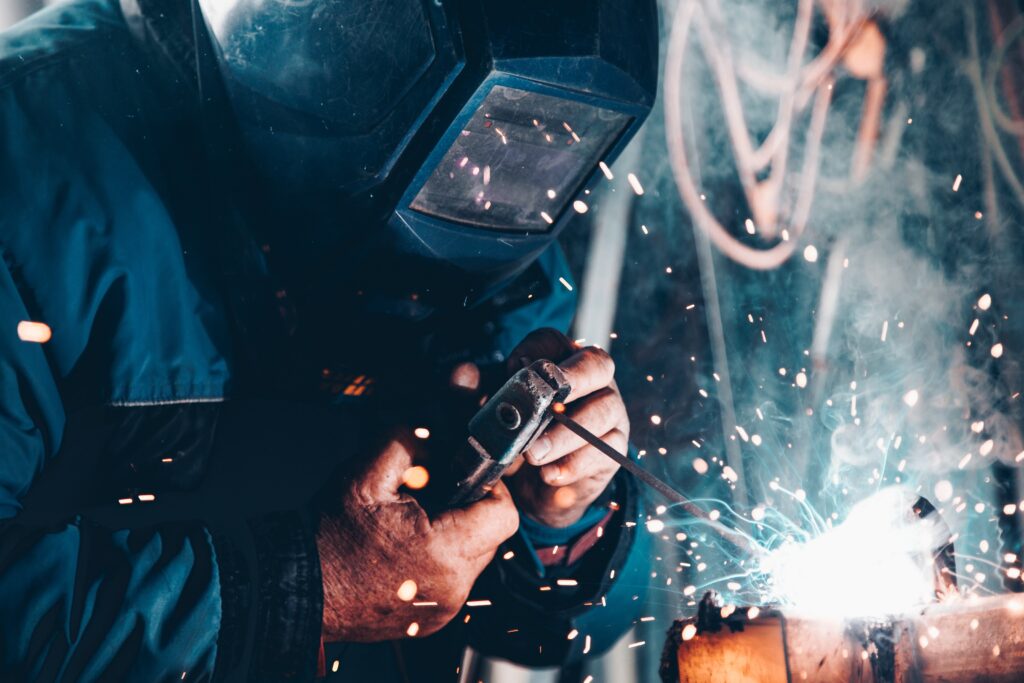
Have you watched Ant Antstead weld on Master Mechanic or Celebrity IOU Joyride? He makes it appear effortless. That’s what decades of honing your craft looks like as a professional welder. Joining pieces of metal with skill and precision is a serious job and respected trade.
Welding techniques vary. That’s why EDCO Fabrication has put together a list of different welding types you’ll find within the industry.
MIG
MIG welding is one of the best styles for beginners to learn. It’s easy and uses two techniques: bare wire and flux core.
Bare wire MIG welding joins thin pieces of metal together. Flux core MIG is great for outdoor projects because it doesn’t require a gas supply to operate. MIG is the go-to choice of hobby welders and DYI weekend warriors because the equipment is affordable and doesn’t require a heavy investment.
Stick
Also known as arc welding, this is a highly-skilled process with a definite learning curve. It began in the 1930s and continues to evolve today. It’s simple to learn and low-cost to operate. However, since the lines are not the neatest to accomplish, splatters are a problem, which equals extra cleanup. This technique is perfect for the great outdoors. It’s the go-to in adverse weather and works on rusted, painted, and dirty surfaces.
A replaceable “stick” is the metal filler. An arc connects from the end of the stick to the base metal, melting the electrode into filler metal and creating the weld. The stick is coated in flux. It makes a gas cloud when heated and protects the metal from oxidation. As it cools, the gas settles on the metal and becomes slag. Although not great for thin metals, the electrodes are easy to swap out, making welding simple.
TIG
Extremely versatile, TIG welding is one of the more difficult styles to learn because both hands are needed at all times. One feeds the rod while the other maneuvers a TIG torch, creating the heat and arc.
This is perfect for aluminum, steel, nickel alloys, copper alloys, cobalt, and titanium. The process works best on bike frames, lawn mowers, door handles, and fenders.
Plasma Arc
Plasma arc welding is commonly used for aerospace applications, where the metal they work with tends to have a thickness of 0.015 of an inch. An example would be an engine blade or an air seal. This technique is similar to TIG, yet the electrode used is recessed, and the ionizing gasses inside the arc create heat.
The combination of gasses is argon for the plasma gas, with argon plus 2–5% hydrogen for the shielding gas. Helium can be used for plasma gas, but because it is hotter, it reduces the current rating of the nozzle.
Electronic Beam and Laser
This is cool.
Electronic beam and laser welding are extremely precise and high-energy techniques. Beams and lasers are aimed with pinpoint accuracy to join the smallest implanted medical devices, yet also deliver tremendous power to create massive spacecraft parts.
Both types are versatile, powerful, and can be completely automated. They also create aesthetically-pleasing, gorgeous seams while also being cost-effective.
Gas
The last of its kind, this is now rarely used thanks to TIG welding techniques. Acetylene is the best fuel to use due to its favorable flame characteristics for both high temperature and high propagation rates.
Welders still embrace this method because of the low cost and maintenance. It also gives them better control over the temperature.
Choose EDCO Fabrication for Any Project
EDCO Fabrication features multiple welding tables and equipment designed for large-run jobs involving steel and aluminum. Our welders are highly trained and skilled across a wide range of techniques. Contact our team of professionals for a free consultation and quote today!
